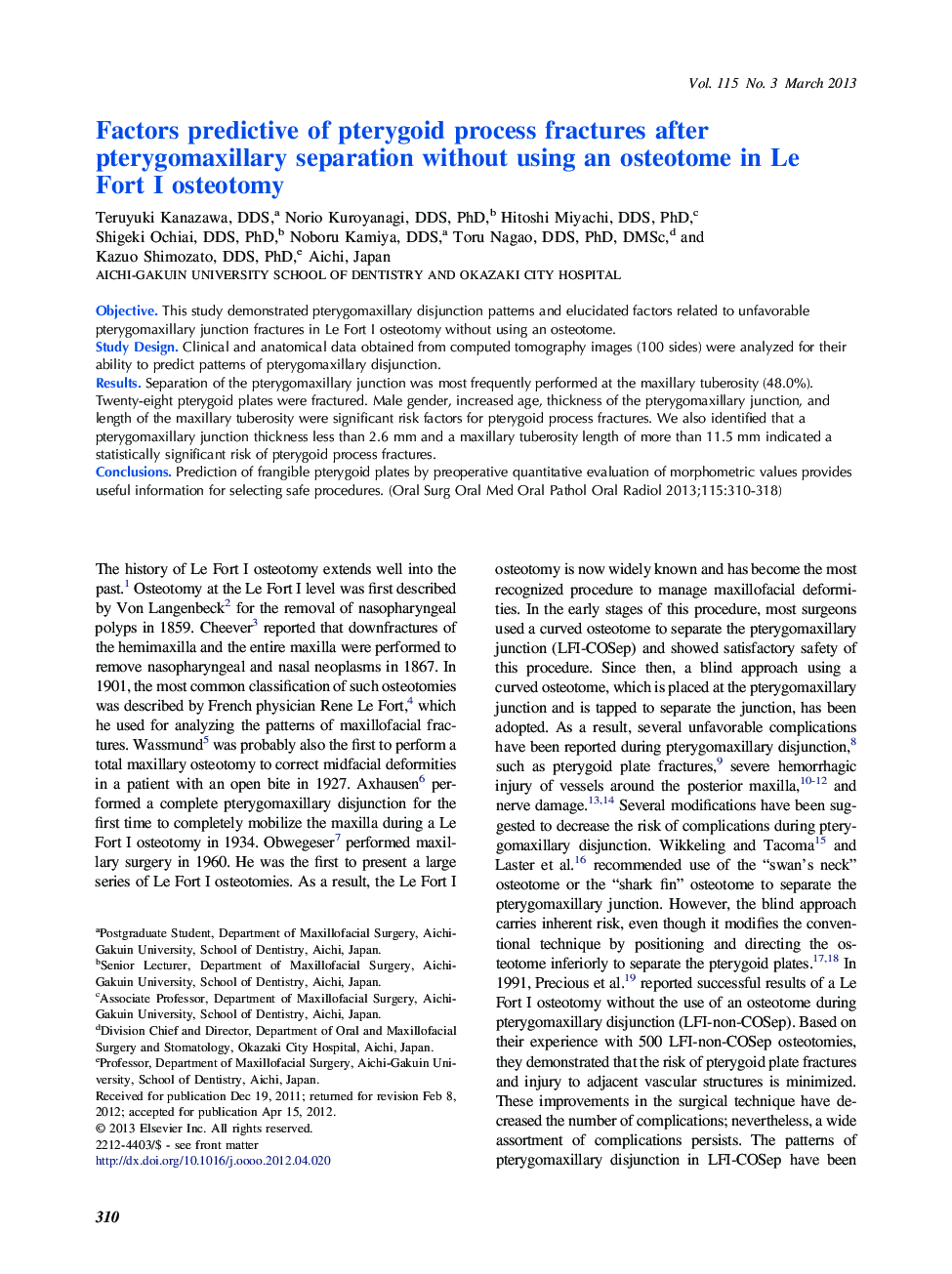| Article ID | Journal | Published Year | Pages | File Type |
|---|---|---|---|---|
| 6058145 | Oral Surgery, Oral Medicine, Oral Pathology and Oral Radiology | 2013 | 9 Pages |
ObjectiveThis study demonstrated pterygomaxillary disjunction patterns and elucidated factors related to unfavorable pterygomaxillary junction fractures in Le Fort I osteotomy without using an osteotome.Study DesignClinical and anatomical data obtained from computed tomography images (100 sides) were analyzed for their ability to predict patterns of pterygomaxillary disjunction.ResultsSeparation of the pterygomaxillary junction was most frequently performed at the maxillary tuberosity (48.0%). Twenty-eight pterygoid plates were fractured. Male gender, increased age, thickness of the pterygomaxillary junction, and length of the maxillary tuberosity were significant risk factors for pterygoid process fractures. We also identified that a pterygomaxillary junction thickness less than 2.6 mm and a maxillary tuberosity length of more than 11.5 mm indicated a statistically significant risk of pterygoid process fractures.ConclusionsPrediction of frangible pterygoid plates by preoperative quantitative evaluation of morphometric values provides useful information for selecting safe procedures.
